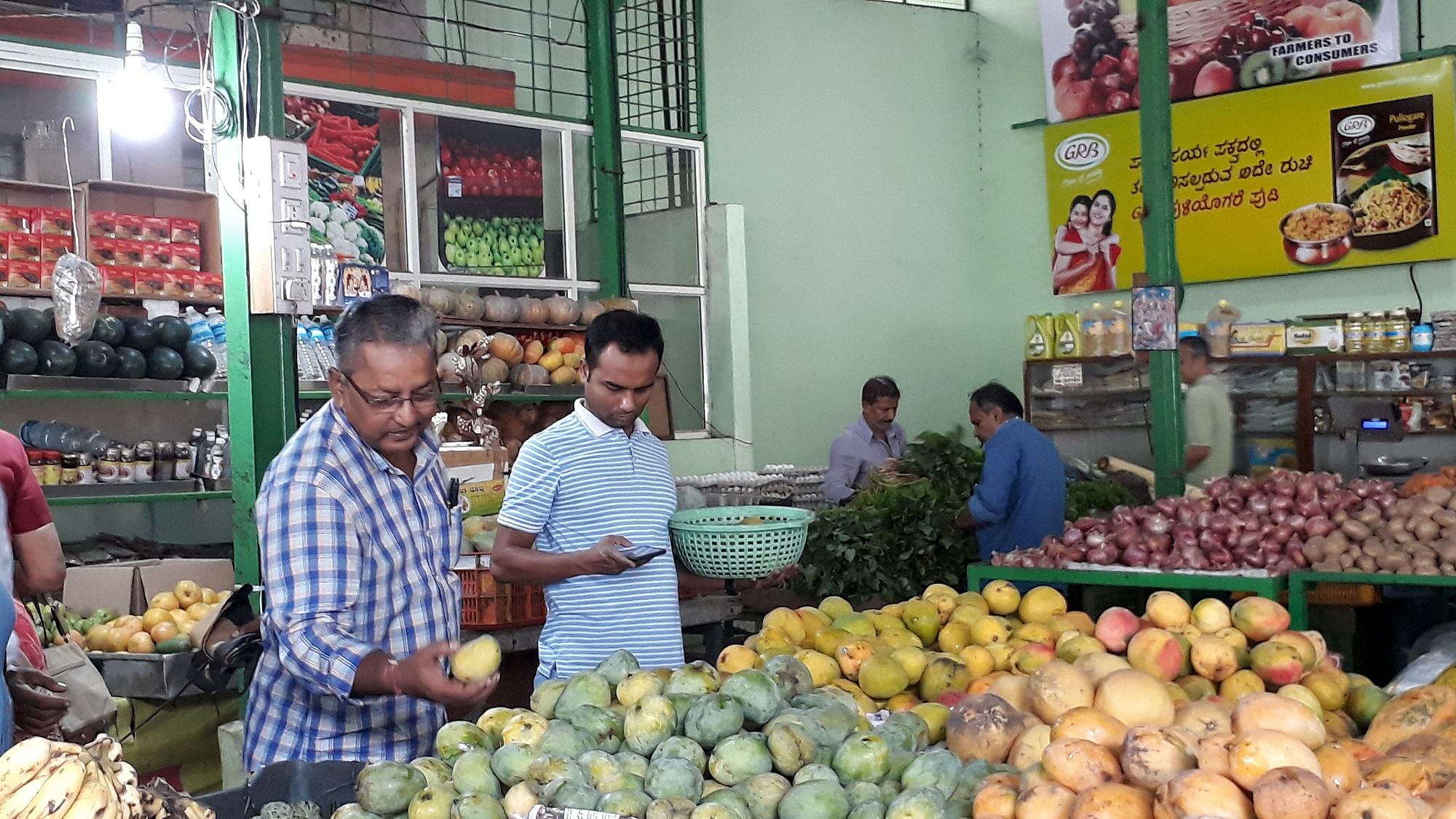
Mangoes are dirt cheap this year. And that is because frequent rains and fruit flies combined to a deterioration in the quality of the produce.
While the Alphonso variety is priced at Rs 90 to Rs 115 a kilo, Banganapalle, Sindhura, Neelam and Thotapuri are going for Rs 30 to Rs 40.
At the Hopcoms stalls put up by the horticulture department at the Metro station, you could get three and a half kilos of Sindhura for Rs 100, and three kilos of the more premium varieties for Rs 200.
Horticulture officials blame the quality for the fall in prices. “Sudden change of weather during the peak flowering season is a reason. Heavy rainfall after October also led to the deterioration of quality. The fruit fly menace was also big this time,” says B N Prasad, managing director, Hopcoms.
The Nipa virus scare also affected sales and brought down mango prices.
However, that doesn’t mean all the mango varieties available in the market are substandard. Hopcoms procure mangoes directly from farmers and ripens them naturally in its units. “If we do buy ripe mangoes from farmers, we make sure they follow the ripening process prescribed by us. We also conduct random tests to make sure mangoes don’t fall short of the prescribed
standards,” an official says.
According to C G Nagaraj, director of Mango Board, the harvest came late to Srinivasapura, Chintamani and other agriculture produce marketing yards. “The fruits took longer to mature this year,” he says.
Poor quality led to price crash
Dr S V Hittalmani, retired additional director of the Horticulture Department, says prime varieties like Malgova and Alphonso are coming to an end and other varieties, such as Neelam and Totapuri, have hit the market. “Adverse climatic conditions, with intermittent rains in May and June, affected the quality of mangoes this year,” says Hittalmani.
The rains bring high humidity and moisture is retained on the fruit. This can trigger diseases. Frequent rains have also increased the population of the fruit fly and set off diseases that have gone out of control. This has led to a deterioration in mango quality this year, he explains.
Prices are decided at the mandis or wholesale markets. Although there is no surplus this year (prices go up in such a situation), prices remain low because the fruit quality is poor. “That is why you read reports of heaps of mango being dumped by the roadside,” he says.
Bitter harvest: Farmers’ story
B V Chikkanna, mango grower from Devanahalli taluk (near the airport), says this has been a bad year.
“Mangoes have taken longer to ripen this year because of small and frequent rains. The diseases manifest in the form of black spots. This has affected quality and rendered much of our produce unfit for consumption,” explains Chikkanna. Growers are unable to unload their produce at private mandis in places like Srinivasapura because of the low quality. “They refuse, saying the quality is poor.” This year, growers are finding it difficult even to recover the cost of fertiliser, he says.
Horticulture Dept helps farmers
Crop cycle and other information.
Quality, nutrient and pest management.
Subsidy for crates and cartons.